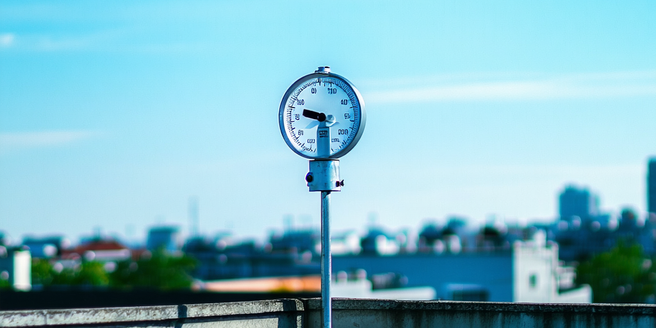
Anemometers: Measuring Wind Speed and Direction
Anemometers are essential tools in the field of meteorology for measuring wind speed and direction. These devices come in various forms, including cup anemometers, vane anemometers, and ultrasonic anemometers, each with unique mechanisms to capture wind data. Accurate wind assessments aid in predicting storm patterns and potential impacts on structures. The data gathered by anemometers is crucial for meteorologists to analyze wind speed variations, providing vital inputs for weather forecasting models. The integration of modern digital technology has enhanced anemometer accuracy, allowing for real-time data transmission to weather centers. By carefully monitoring wind speed and direction, anemometers contribute to a broader understanding of storm dynamics, helping forecasters provide timely warnings to communities at risk of high wind events.
Barometers: Tracking Atmospheric Pressure Changes
Barometers play a critical role in monitoring atmospheric pressure changes, a key factor in weather forecasting. By measuring the weight of the air above, barometers provide insights into forthcoming weather changes, such as storms or sunny days. A sudden drop in atmospheric pressure typically indicates an approaching storm, allowing meteorologists to issue timely alerts. Historically, mercury and aneroid barometers were the primary instruments used; today, digital barometers with enhanced precision offer rapid, accurate readings. The ability to track minute pressure changes is invaluable for predicting severe weather conditions. As technology continues to evolve, barometers remain a foundational tool in the scientist’s weather arsenal, offering vital data needed to prepare for and potentially mitigate the impacts of storm systems.
Rain Gauges: Quantifying Precipitation Levels
Rain gauges are indispensable in measuring precipitation levels, providing critical data for meteorology and hydrology. Modern rain gauges come in several types, including tipping buckets, weighing gauges, and optical gauges, each designed to capture rainfall with precision. Accurate rainfall measurements help meteorologists analyze storm patterns and predict flood risks. The data collected is vital for water resource management, agriculture, and planning infrastructure to withstand storm events. By quantifying precipitation, rain gauges play a crucial role in improving weather forecasts and enhancing our understanding of local and regional climate patterns. This contributes to better preparation and response strategies during heavy rain events, ultimately seeking to reduce the potential for damage and loss in vulnerable areas.
Weather Satellites: Observing Storm Patterns from Space
Weather satellites revolutionize storm monitoring by offering a broad view of atmospheric changes from space. These satellites employ advanced sensors to capture data on storm systems, cloud cover, and temperature fluctuations. By providing continuous, global coverage, they enhance our ability to track storm development in real-time and improve weather prediction accuracy. Satellites measure parameters such as cloud thickness, water vapor content, and surface temperatures, vital for forecasting severe weather events. The data gathered allows meteorologists to visualize and analyze storm trajectories and behaviors on a global scale. As technology advances, the precision and capabilities of weather satellites continue to grow, representing a cornerstone in the efforts to understand and mitigate the impacts of natural disasters.
Doppler Radar: Detecting Storm Movement and Intensity
Doppler radar is an essential tool for detecting storm movement and intensity, crucial for meteorologists aiming to predict and track severe weather. It operates by sending out radio waves and measuring the changes in returned signals, which indicate the velocity and motion of precipitation. This information is pivotal for understanding storm dynamics, especially tornadoes and severe thunderstorms. The data can reveal rotational patterns within a storm, signaling the potential for tornado formation. With its ability to provide high-resolution images of storm systems, Doppler radar greatly enhances the accuracy of weather forecasts. As an integral part of modern meteorological equipment, it helps in safeguarding lives and property by enabling the timely issuing of warnings and helping communities prepare for adverse weather conditions.
